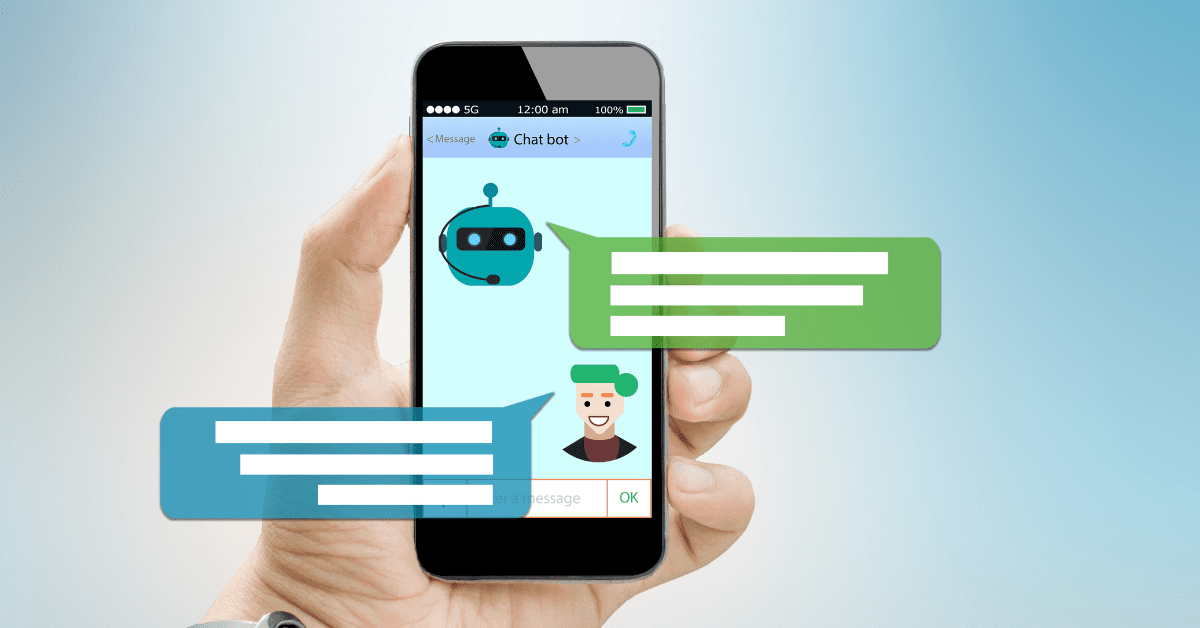
Since the pandemic, customers are more willing to engage with brands over social and messaging channels. It’s also made them impatient and more likely to prioritize convenience over price.
Check out some of the rising trends predicted for 2023 when it comes to customer service and marketing.
Augment Customer Service with Chatbots
According to the American Customer Satisfaction Index, overall customer satisfaction has dropped to its lowest level in 17 years after surveying over 96,000 U.S. consumers. This dissatisfaction is being driven by consumers feeling neglected.
One of the ways to provide speedier responses to customers without having to double the size of your customer service team is by turning to chatbots and simple conversational AI tools. This automation can handle frequently asked questions and help with getting maintenance customers scheduled.
While some believe chatbots are impersonal, they simplify common interactions that can suck up a ton of your customer service staff’s time. One AI tool, HeyDay, has the ability to distinguish between multiple choices, make a decision gather insights and allow your support team to spend more time resolving the problems that truly require a human touch.
By 2025, 95 percent of customers’ interactions with brands will be via artificial intelligence like chatbots. This automation can help boost customer engagement, improve customer satisfaction and drive sales.
Social Media as a Customer Service Channel
In a survey conducted by Hootsuite, almost half (49 percent) of respondents said their marketing team was usually or exclusively responsible for providing customer service through social and messaging apps. Yet only 21 percent of marketers feel they are doing a good job servicing customers on these social channels.
While social media was never meant to be a customer service channel, it cannot simply be ignored. Marketers need to make sure their company’s brand isn’t soured by unanswered DMs.
“In businesses, we theoretically break out functions to be more efficient,” says Chris Campbell, CEO of reputation management software ReviwTrackers. “But it’s really everybody’s job to deliver a great customer experience. Marketers are neither trained to respond to customers nor is there an incentive to if that responsibility sits outside their remit and with another team.”
Take the time to treat social media as a core function of your business for high-level strategy and planning rather than an afterthought. Also, invest in better training for your marketing team so they feel more equipped to handle these customer service questions.
Behavior-Based Targeting
Personalization is always important and Zoe Allen, CRO and personalization lead at Decathlon, says businesses will be taking a behavior-based approach as a way to future-proof personalization as they move beyond demographics.
Allen says the problem is there’s no such thing as an ‘average user’ so when it comes to segmenting, businesses should look at an audience’s behavior, not their attributes. Knowing customers’ likes, dislikes and motivations are what can drive conversions. Demographics don’t define a person, their actions do.
These behaviors can be tracked with first-party and third-party cookies, but third-party cookies are set to phase out in 2024. Some of the options moving forward are to employ a first-party data strategy and gain users’ consent before collecting their data and using contextual advertising for nonpersonal targeting. This is where ads are positioned based on the content of the webpage, assuming that users with certain collective behavioral attributes will visit that content.

